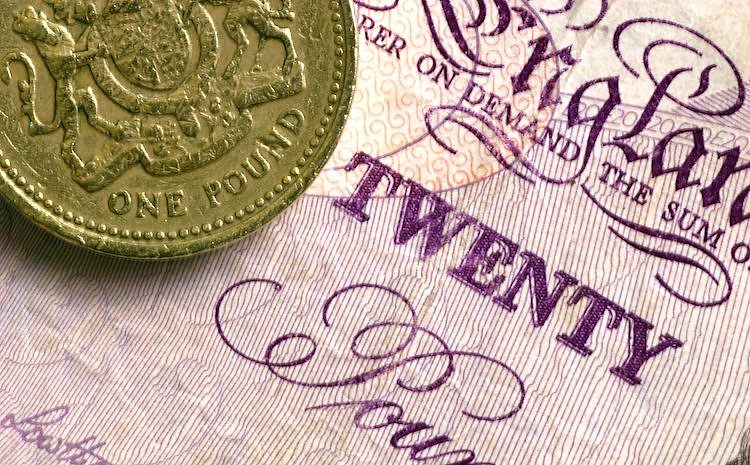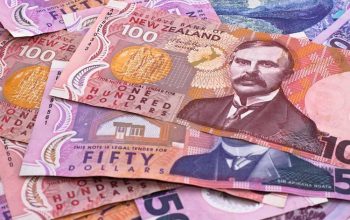- The Pound Sterling falls below 1.3150 against the US Dollar after sticky US core PCE inflation.
- A decline in market expectations for the Fed’s large interest rate cuts supported the US Dollar.
- The policy-easing spell from the BoE is expected to be slower than that of its major peers.
The Pound Sterling (GBP) extends its two-day losing spree and posts a fresh intraday low below 1.3150 against the US Dollar (USD) in Friday’s North American session. The GBP/USD pair fails to gain ground as the US Dollar rises sharply after the release of the United States (US) Personal Consumption Expenditure Price Index (PCE) data for July, which came in slower than expected. The US Dollar Index (DXY), which tracks the Greenback’s value against six major currencies, jumps above 101.50.
The PCE inflation report showed that the core inflation, which excludes volatile food and energy prices, rose steadily by 2.6{721fc769be108e463fe4e33f629fb22fe291c423a7a69eaaf65dcb28e9b05dea}, slower than estimates of 2.6{721fc769be108e463fe4e33f629fb22fe291c423a7a69eaaf65dcb28e9b05dea}. On a month-on-month basis, the underlying inflation rose by 0.2{721fc769be108e463fe4e33f629fb22fe291c423a7a69eaaf65dcb28e9b05dea}, as expected.
Historically, the impact of the PCE inflation data has been high as it is the Federal Reserve’s (Fed) preferred inflation gauge for decision-making on interest rates. This time, the impact of the underlying inflation data was expected to remain limited on market speculation for the Fed’s interest rate cut path this year.
With increased confidence that inflation is on track to sustainably decline to the Fed’s target of 2{721fc769be108e463fe4e33f629fb22fe291c423a7a69eaaf65dcb28e9b05dea}, officials are now worried about growing risks to US labor market strength. “The balance of risks to our mandate has changed”, said Fed Chair Jerome Powell last week in his speech at the Jackson Hole (JH) Symposium. The comments from some other Fed policymakers have also indicated that the central bank won’t hesitate to reduce its key borrowing rates aggressively in case further evidence of a sharp deterioration in the labor market emerges.
Currently, financial market participants expect that the Fed is almost certain to start reducing interest rates in September. However, signs of stickiness in price pressures from the PCE inflation data have diminished bets supporting the Fed to start the policy-easing cycle aggressively. According to the CME FedWatch tool, the likelihood of a 50 basis points (bps) interest rate reduction has reduced to 30.5{721fc769be108e463fe4e33f629fb22fe291c423a7a69eaaf65dcb28e9b05dea} from 36{721fc769be108e463fe4e33f629fb22fe291c423a7a69eaaf65dcb28e9b05dea} recorded a week ago.
Daily digest market movers: Pound Sterling to be influenced by speculation over BoE interest rate path
- The Pound Sterling exhibits a mixed performance against its major peers on Friday. However, the broader outlook of the British currency remains firm with investors gaining confidence that the policy-easing cycle by the Bank of England (BoE) will be gradual in the remainder of the year compared with that of its peer central banks.
- According to money market pricing data, the BoE is expected to cut interest rates by 40 bps in the remaining year, while the European Central Bank (ECB) is projected to do the same by 65 bps, Reuters reported. In the same time frame, the Fed is estimated to cut its key borrowing rates by 100 bps, according to the CME FedWatch tool.
- Firm speculation for BoE’s shallow policy-easing cycle is the result of the improved economic outlook in the United Kingdom (UK). In July, the International Monetary Fund (IMF) raised the Gross Domestic Product (GDP) target for this year to 0.7{721fc769be108e463fe4e33f629fb22fe291c423a7a69eaaf65dcb28e9b05dea}. Fiscal plans of the new Labour government led by Prime Minister Keir Starmer, which include planning reform and closer trade ties with the European Union, will prompt economic activity, analysts at Goldman Sachs said.
Technical Analysis: Pound Sterling dips below 1.3150
The Pound Sterling extends its correction below 1.3150 against the US Dollar. The GBP/USD pair drops after failing to gain ground near 1.3200. However, the near-term appeal of the GBP/USD pair remains firm as it holds the breakout of the Rising Channel chart formation on the weekly time frame. If bullish momentum extends, the Cable is expected to rise towards the psychological resistance of 1.3500 and the February 4, 2022, high of 1.3640 after breaking above a fresh two-and-a-half-year high of 1.3266 against the US Dollar.
The upward-sloping 20-week Exponential Moving Average (EMA) near 1.3000 suggests a strong upside trend.
The 14-period Relative Strength Index (RSI) oscillates in the bullish range of 60.00-80.00, suggesting a strong upside momentum. Still, it is close to overbought levels at around 70.00, increasing the chances of a corrective pullback. On the downside, the psychological level of 1.3000 will be the crucial support for the Pound Sterling bulls.
Economic Indicator
Core Personal Consumption Expenditures – Price Index (YoY)
The Core Personal Consumption Expenditures (PCE), released by the US Bureau of Economic Analysis on a monthly basis, measures the changes in the prices of goods and services purchased by consumers in the United States (US). The PCE Price Index is also the Federal Reserve’s (Fed) preferred gauge of inflation. The YoY reading compares the prices of goods in the reference month to the same month a year earlier. The core reading excludes the so-called more volatile food and energy components to give a more accurate measurement of price pressures.” Generally, a high reading is bullish for the US Dollar (USD), while a low reading is bearish.



